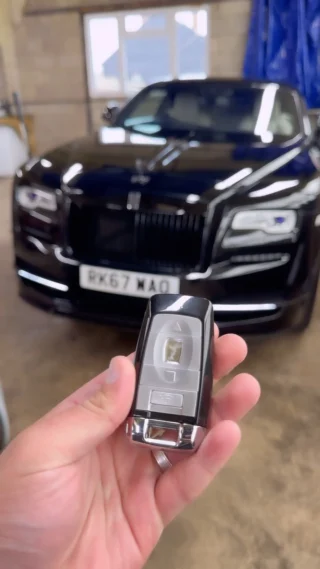Understanding Car Key Transponder Programming
In today's automotive landscape, the combination of advanced technology has actually ended up being synonymous with vehicle security. car key replacement estimates of the most significant advancements in this area is the introduction of transponder keys. Car key transponder programming is an important process that ensures cars are protected from unapproved gain access to while offering benefit to owners. This post explores what transponder keys are, how they work, the programming process, and answers to some often asked questions.
What is a Transponder Key?
A transponder key is a type of ignition key which contains a little embedded microchip. This chip communicates with the vehicle's immobilizer system. Transponder keys are designed to boost vehicle security by preventing hot-wiring and unapproved engine begins.
Key Features of Transponder Keys:
- Embedded Microchip: Each key includes a distinct code that represents the vehicle's ignition system.
- Immobilizer System: This system recognizes the key's unique code and enables the engine to begin just if the appropriate key is used.
- Enhanced Security: Transponder keys are considerably more difficult to duplicate than conventional keys, reducing the threat of theft.
How Transponder Keys Work
Transponder keys operate on a simple concept of radio frequency identification (RFID). When the key is placed into the ignition or brought near the vehicle, the following sequence takes place:
- Signal Transmission: The vehicle's ignition system sends out a radio signal to the transponder key.
- Code Response: The ingrained chip in the key receives this signal, activates, and returns its special code.
- Verification: The vehicle's computer system validates the received code. If it matches the kept code, the engine will begin; if not, the engine remains paralyzed.
Benefits of Transponder Technology:
- Improved theft prevention.
- Convenience of keyless vehicle beginning (in some systems).
- Decreased costs related to insurance premiums due to boosted security steps.
The Car Key Transponder Programming Process
Programming a car key transponder is a crucial action that enables a new key to interact with the vehicle's immobilizer system. The process can vary based upon the make and design of the car but generally consists of the following actions:
Steps Involved in Transponder Key Programming:
- Obtain a New Transponder Key: Owners must first acquire a blank transponder key compatible with their vehicle.
- Gain Access To the OBD-II Port: For modern automobiles, programming usually needs an On-Board Diagnostics (OBD-II) scanner that connects to the OBD-II port.
- Switch on the Ignition: The ignition should be turned to the "On" position without beginning the engine. This enables the system to recognize that a brand-new key is to be configured.
- Follow Programming Procedure: Depending on the vehicle, follow the particular programming steps offered by the producer, usually detailed in the owner's manual. This might include pushing specific buttons in a particular order.
- Evaluate the Key: After programming, it's necessary to check the key by attempting to begin the engine. If effective, the key is properly programmed.
Tips for Successful Programming:
- Consult an expert locksmith or dealership for intricate programming procedures.
- Make sure battery levels in the key fob and vehicle suffice.
- Follow the guidelines closely to avoid errors.
Typical Issues with Transponder Key Programming
In spite of the apparently straightforward process, numerous concerns might arise during programming. Below are some common challenges:
- Key Compatibility: Using an incompatible key can cause programming failures.
- Faulty Equipment: A malfunctioning OBD-II scanner may avoid access to the programming menu.
- Weak Key Batteries: Insufficient power in the key fob can interfere with communication.
Often Asked Questions (FAQs)
1. Can I configure my transponder key myself?
While lots of lorries permit for DIY programming, some models require specific equipment or software application. If unsure, it's best to seek advice from a professional locksmith or your vehicle dealership.
2. What if I lose my transponder key?
If a transponder key is lost, it's advisable to call a certified automotive locksmith or your dealer for a replacement. They can program a brand-new key based on your vehicle's VIN (Vehicle Identification Number).
3. Just how much does it cost to configure a transponder key?
The cost varies widely, depending upon the vehicle make and model, and whether you choose to go through a dealer or a locksmith. Prices generally range from ₤ 50 to ₤ 150.
4. What occurs if my transponder key stops working?
If your transponder key quiting working unexpectedly, it might be due to a dead battery or issues with the vehicle's immobilizer system. It's recommended to have both the key and the vehicle checked by an expert.
5. How typically should I change transponder key batteries?
Transponder key batteries need to be replaced every 2 to 3 years, though this can differ based on usage. Signs of a dying battery include problem beginning the vehicle or the key fob not operating at all.
Car key transponder programming is a vital process for modern vehicle security and convenience. Understanding how transponder keys function and how they are programmed can empower vehicle owners to handle their vehicle security efficiently. As technology continues to develop, remaining informed about these advancements will assist owners secure their possessions and guarantee their automobiles run smoothly.
Summary Table: Key Features of Transponder Keys
| Feature | Description |
|---|---|
| Embedded Microchip | Consists of an unique code for vehicle identification |
| Immobilizer System | Avoids unapproved engine begins |
| Improved Security | Tough to duplicate compared to conventional keys |
With advancements in technology, the importance of understanding and successfully handling car key transponder systems can not be overemphasized. Boosted vehicle security not only secures your investment but likewise ensures comfort on the roadways.

